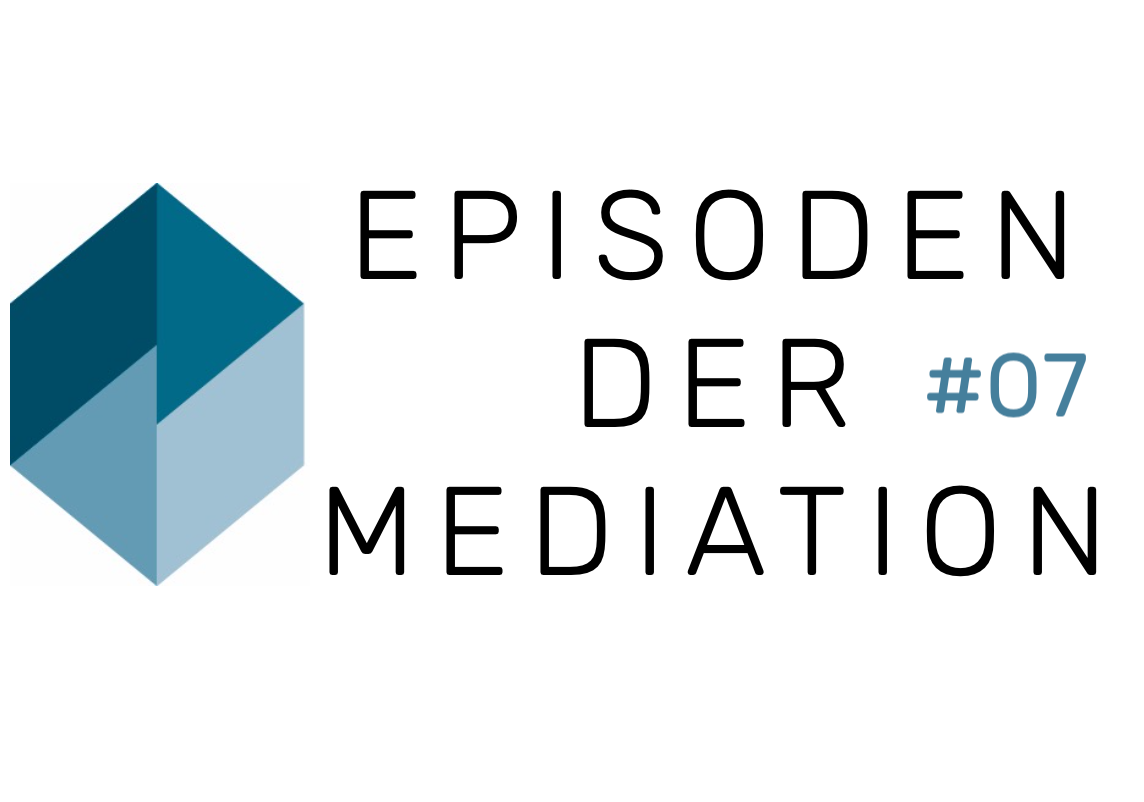INKOVEMA Podcast „Episodes of Mediation“
#07 EdM – Violence and Mediation III
Affirmed violence and the need to apologise in mediation
How do we mediators effectively convey an apology in mediation?
Episodes of mediation. The podcast on practical questions about mediation and conflict management.
That is Episode 7 – Violence and mediation. Part III – Affirmation of violence and the need to apologise
How do we mediators effectively convey an apology in mediation?
Classification:
After episode 6 dealt with the disputed allegation of violence in mediation, this time it is about the situation where the allegation of violence is not denied but confirmed and an apology is made.
I have the following case situations in the back of my mind, which involved an apology in my practice:
- During mediation to clarify and possibly separate a married couple, they discussed an incident that had occurred some time ago and in which both sides had become violent, but the husband's punch that ended the argument in an escalating manner was still in question. His repeated apologies did not land and did not calm the wife down. The husband was outraged by this and felt entitled to sulk. The woman, for her part, was also not prepared to question her provocations and escalations. They kept coming to the same dead end. The risk of truly jeopardising the relationship with their own moves disrupted communication.
- Another case also involved a need to apologise in mediation, but without violence. In this case, conflict party A had told colleague X what he had heard about her new project partner and conflict party B, namely that he considered colleague X to be incapable and difficult and completely incompetent. A considered this clarification to X, to whom he felt obliged, to be justified, but had to admit to B in the mediation that he had neither proof of the allegation nor anything else clear. During the mediation, B came to the realisation that he had to formally and officially apologise to A in order to salvage the situation for himself.
Both situations illustrate that an apology is not so simple – and must be initiated, organised and carried out in mediation, and sometimes even documented.
Problem description
The challenge for mediators is that they have to "stay at their post". They cannot think and act in terms of perpetrators and victims simply because unauthorised violence has been conceded. Mediators must remain neutral and impartial.
Nevertheless, the apology communication must succeed in such a way that the mediator is relieved of the burdens of the relationship. And this means – if the desire for an apology appears – to first enable the following step-by-step procedure:
- Decelerate communication
It must be clear to everyone what an apology means. Not just insight on the part of the perpetrator, but an apology from the victim. Apology means that guilt is absolved, i.e. the guilty party is exonerated and the injured person ("victim") frees the guilty party from guilt. The offender cannot free themselves from guilt, they can only ask for it. Although they can forgive themselves for their mistakes and misdemeanours and forgive themselves (and should definitely do so), this does not change much in social, interpersonal relationships.
2. formulate a clear apology request:
The guilty person begins the "social apology process" with their request: "I would like to apologise to you." Not literally, of course, but the request should be formulated in a way that is understandable to both parties so that it is clear who wants what from whom! It is not so much the victim who wants to apologise, but the perpetrator.
3. injured person declares their willingness to do so
The injured person must declare their willingness to participate in such an apology communication: "OK, I'm prepared to apologise in principle."
4. clarification of the specific situation and common basis of understanding
Both parties should then talk about the incident and clarify specifically and precisely what misconduct is involved, what behaviour is in question and is identified as morally and ethically reprehensible by those involved. This is by no means about the assessment, but only about the behaviour as such.
5. guilty person takes responsibility for the accused behaviour
The person at fault then takes responsibility for their incorrect, hurtful behaviour and wishes to do so. Their own attempts to justify or apologise do not belong here ("But I was also completely overtired...standing next to myself...inattentive, unaware, drunk etc.). The unconditional remorse and regret for what happened invites a subsequent – apology: "I take responsibility for my behaviour and regret it."
5. formulation of the request for apology.
The victim of the offence is asked to apologise/forgive/forgive. The guilt that both sides agree on (see 3. and 4.) should now be removed from the offender by the victim. As a rule, the uncertainty and emotional tension increases at this point for those involved because the request can of course be refused: "I ask you to excuse me for this behaviour and the injury it has caused."
6. acceptance of the request for apology
At best, the victim of the offence accepts this request if and insofar as forgiveness and thus an apology from the offender (not by the offender!) is possible. Here, too, clarity applies: "It's all right!" can mean that the guilt is not removed, but should remain secretly, i.e. psychologically, with the offender.
But with a genuine apology, there is no guilt left. Old packages of guilt are no longer traded with, abused and otherwise misused: Nothing is left that is occasionally "smeared on the other person's bread and butter".
By accepting the request for apology, the offender's guilt is removed. The victim thereby apologises. The offender is now free (of guilt) again in the interpersonal relationship and can feel liberated: "I apologise."
At best, both sides are now indeed relieved...and can move on with conflict resolution.
Next time
will deal with a workplace mediation between management and an employee in which the employee demonstratively refused to participate in the mediation meeting and justified her presence by stating that she had received the order from her superior (who was present).
For now, thank you for joining us again.
Stay with us and get through this time well.
Yours, Sascha Weigel.





Leave A Comment